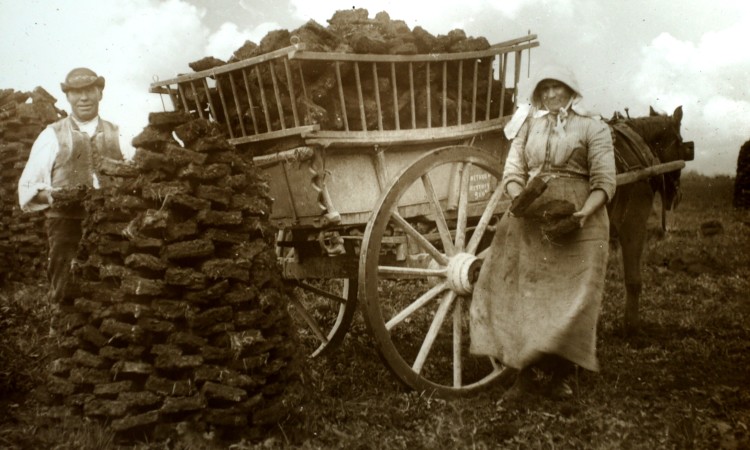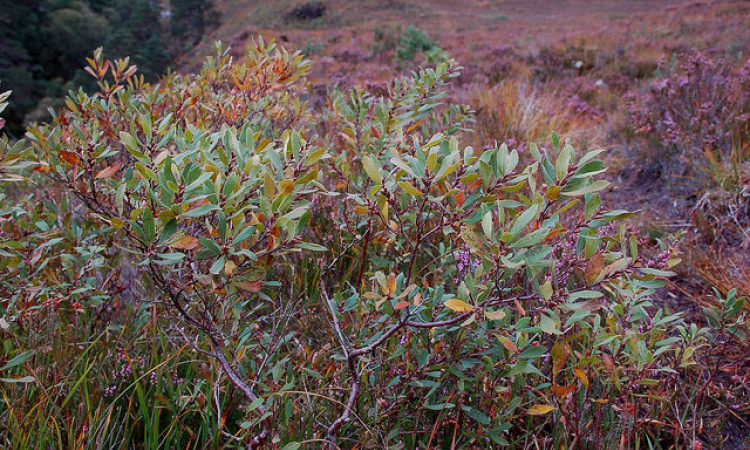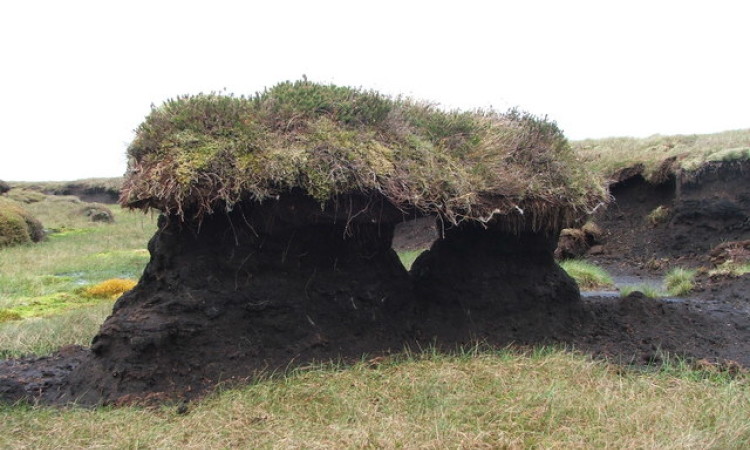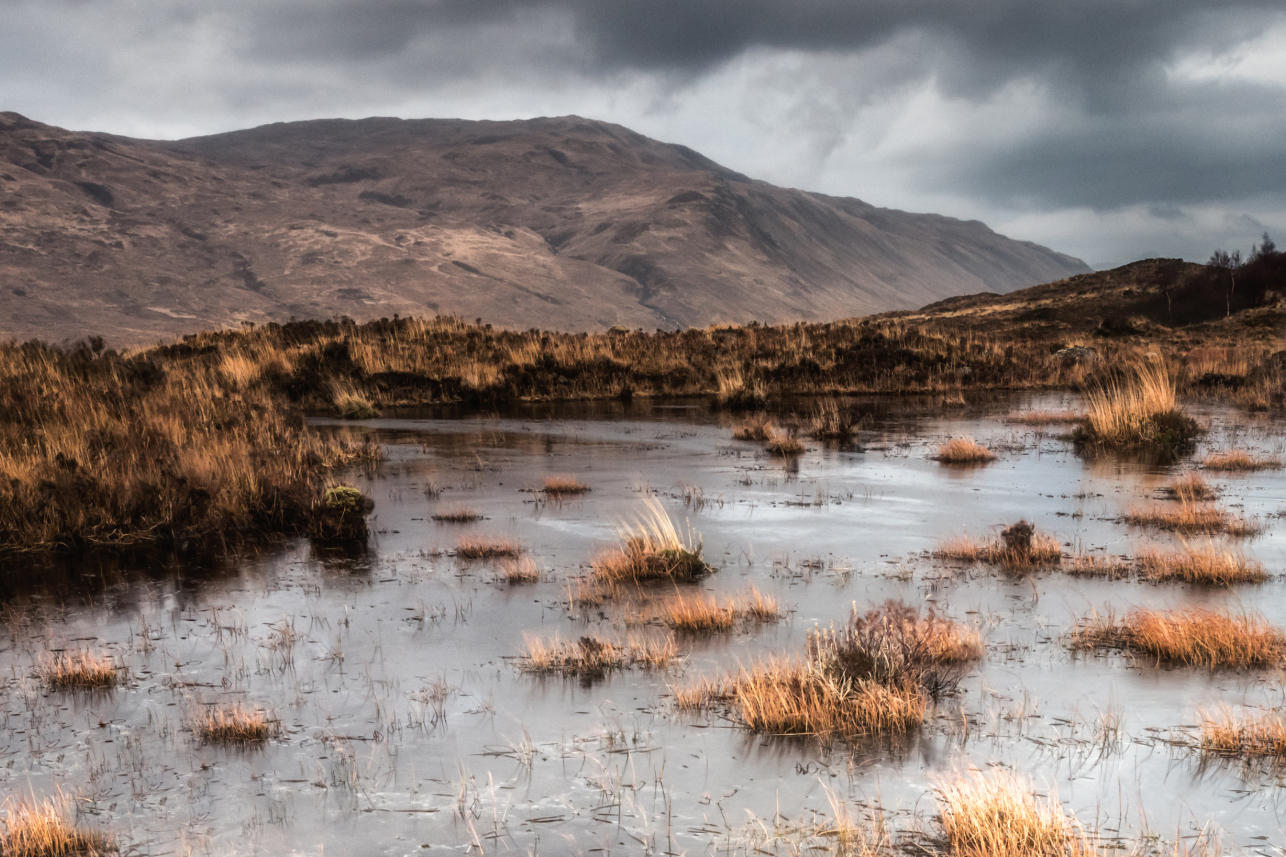For the love of bog
Peatlands pack away carbon, which makes them vital for climate, but bogs and fens have played an important role in people’s lives over millennia for all sorts of reasons. Susan Wright talks to Clifton Bain about the importance of our peatlands.
 ^Peat gatherers loading the peat cart at Westhay, Somerset Levels, England, 1905 (Photo by A.E.Hasse of Baildon York, via Wikimedia Commons)
^Peat gatherers loading the peat cart at Westhay, Somerset Levels, England, 1905 (Photo by A.E.Hasse of Baildon York, via Wikimedia Commons)
A place of plenty
As a source of fuel, food and magical properties, peatlands have been intertwined with life and survival across Britain and Ireland for thousands of years. Peat was cut for burning as far back as the Bronze Age and continues to be extracted today. It’s used in some whisky distilling for its distinct smoky flavour and in horticulture for enriching compost for growing.
Peatlands were places to hunt game and forage for mushrooms, berries and other edibles. Sphagnum moss was used as an anti-bacterial, absorbent material in ancient times, and again during World War I to dress wounds. Bog myrtle (pictured below) is used today in midge-repellent, soap and skin lotions. In lowland fens, people harvested reeds for thatching and other crafts.
“Humans have been interacting with peatlands for an awfully long time,” says author Clifton Bain, former director of the IUCN Peatland Programme. "It’s an interesting part of the story. When you go to a peatland site, it’s all the stuff nearby that you should visit. The local culture helps you understand how the site has got to where it is. In Wales, for example, the old monasteries were industrial hubs of peat extraction. They can help explain the state of their local peatlands.”
Mummified bodies excavated from an old township, Cladh Hallan, on South Uist during the 1990s show peat bogs being used as part of a mummifying process. Here the bodies look to have been placed deliberately in local peat bogs for several months to preserve the bodies before being removed and buried.
In Ireland, the spiritual importance of peat bogs goes back thousands of years and is written about in ancient texts. Peatlands were between worlds, sacred places to be revered. People went to the bogs to rejuvenate. Undamaged peatlands can still offer these restorative powers to mind and body.
“Peat bogs are healthy spaces. They’re important for enjoyment and wellbeing. You can look from one end to another without seeing a human construct in there. That in itself is something we should appreciate more,” says Clifton. “And they’re accessible. I’ve noticed that bogs and mosses are often popular with parents who can push buggies around the boardwalks. That sort of access to nature is vital.”

^Bog Myrtle (Image: Jim Barton, Creative Commons)
Lessons from the bog
Peat bogs teach us about the past, offering up preserved bodies, old settlements and clues to human activity in bygone times. In addition, the remains of ancient trees, animal skeletons and pollen provide a valuable peek into the natural environment as it has changed over thousands of years. Whale skeletons, for example, have been found in peat in the Carse of Stirling, dating back 9,000 years when the waters of the Forth Estuary covered a larger expanse.
In the 20th Century, we started to realise peatlands are important to drinking water and flood management. About 70 per cent of our drinking water in Britain comes from peatland catchment areas. Peatland plants filter out harmful metals (such as zinc and copper) and other elements from soon-to-be drinking water, and reduce sediment and particulates. Water companies have realised it’s easier and cheaper to fix the peatlands to clean the brown water coming off damaged bogs.
Slowly but surely we’re embracing peatlands again. ‘Friends of…’ groups – such as Friends of Lenzie Moss outside Glasgow and Friends of Carrington Moss outside Manchester – have sprung up to protect and restore remaining fragments of bog and moss in local areas, recognising their importance for carbon storage, leisure and well being.
The problem for peatlands is that most people have only ever seen damaged and degraded bogs... Most of us don’t know what a peatland should be.
- Clifton Bain

^Eroded peat hag between Geifas and Domen Milwyn, Wales/Twmpath mawn - Rhwng Geifas a Domen Milwyn (Image: Gareth Lewis, Creative Commons)
- Clifton Bain is author of The Peatlands of Britain and Ireland.
- Read more bog-related articles in our special celebration section - All about peatlands and find out how you can take action to help us care for them.
